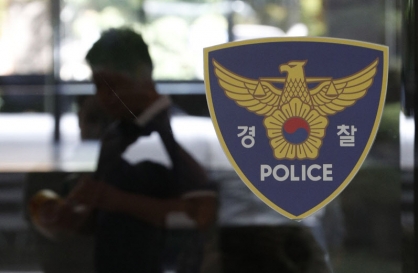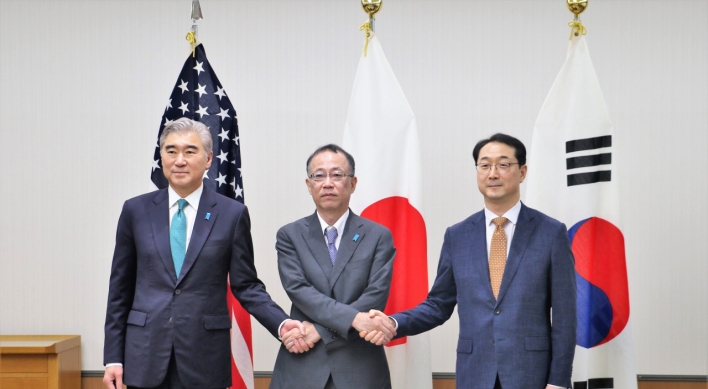A white rhinoceros died of shock last year after it escaped its compound at a local zoo, raising questions about safety measures in public parks.
The news was belatedly released after two different accidents in public zoos resulted in the death of a zoo keeper on Jeju Island and another falling into a coma at Seoul Grand Park.
The park officials said they buried the 35-year-old rhinoceros near the zoo after it died, but did not report to police or emergency services. It was reported to the Ministry of Environment, but two months after the accident occurred.
On Aug. 5 last year, the animal escaped through an unlocked door into a kitchen and storage space, where a number of keepers were located. The animal died of a heart attack after hours of confrontation with keepers’ deterrence measures and ramming into walls.
“There was no need to report the case and we didn’t think that big about the issue because the rhinoceros didn’t escape the zoo. It just went into the storage area next to its compound,” an official from the park told The Korea Herald.
The white rhinoceros is listed as an endangered species by an annex to an international wildlife trafficking agreement called the “Convention on International Trade in Endangered Species.”
On Nov. 17, two Asiatic black bears attacked a 78-year-old keeper in a zoo on Jeju Island, while he was cleaning the bears’ compound.
A week later, in the Seoul zoo, a 52-year-old keeper was bitten in the neck after trying to lure an escaped Siberian tiger back into its cage.
While some experts say drastic change in the weather conditions and temperature can cause the animals to become aggressive, a professor at Kyungpook University says the only cause of the accidents is a lack of safety awareness.
“Predatory animals like tigers and black bears are always prone to injuring humans. Even if they’re captured and tamed in zoos, people always have to be careful about approaching wild animals,” Lee Keun-woo, a veterinary science professor told The Korea Herald.
After the first two accidents, the city government said it would fortify big cat enclosures, install surveillance cameras and higher fences ― raising them from the current 1.5 meters to 5 meters.
By Suk Gee-hyun (monicasuk@heraldcorp.com)
The news was belatedly released after two different accidents in public zoos resulted in the death of a zoo keeper on Jeju Island and another falling into a coma at Seoul Grand Park.
The park officials said they buried the 35-year-old rhinoceros near the zoo after it died, but did not report to police or emergency services. It was reported to the Ministry of Environment, but two months after the accident occurred.
On Aug. 5 last year, the animal escaped through an unlocked door into a kitchen and storage space, where a number of keepers were located. The animal died of a heart attack after hours of confrontation with keepers’ deterrence measures and ramming into walls.
“There was no need to report the case and we didn’t think that big about the issue because the rhinoceros didn’t escape the zoo. It just went into the storage area next to its compound,” an official from the park told The Korea Herald.
The white rhinoceros is listed as an endangered species by an annex to an international wildlife trafficking agreement called the “Convention on International Trade in Endangered Species.”
On Nov. 17, two Asiatic black bears attacked a 78-year-old keeper in a zoo on Jeju Island, while he was cleaning the bears’ compound.
A week later, in the Seoul zoo, a 52-year-old keeper was bitten in the neck after trying to lure an escaped Siberian tiger back into its cage.
While some experts say drastic change in the weather conditions and temperature can cause the animals to become aggressive, a professor at Kyungpook University says the only cause of the accidents is a lack of safety awareness.
“Predatory animals like tigers and black bears are always prone to injuring humans. Even if they’re captured and tamed in zoos, people always have to be careful about approaching wild animals,” Lee Keun-woo, a veterinary science professor told The Korea Herald.
After the first two accidents, the city government said it would fortify big cat enclosures, install surveillance cameras and higher fences ― raising them from the current 1.5 meters to 5 meters.
By Suk Gee-hyun (monicasuk@heraldcorp.com)


















